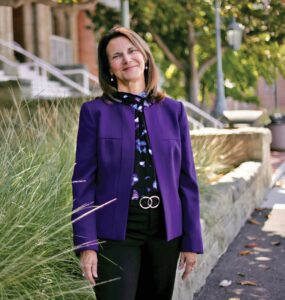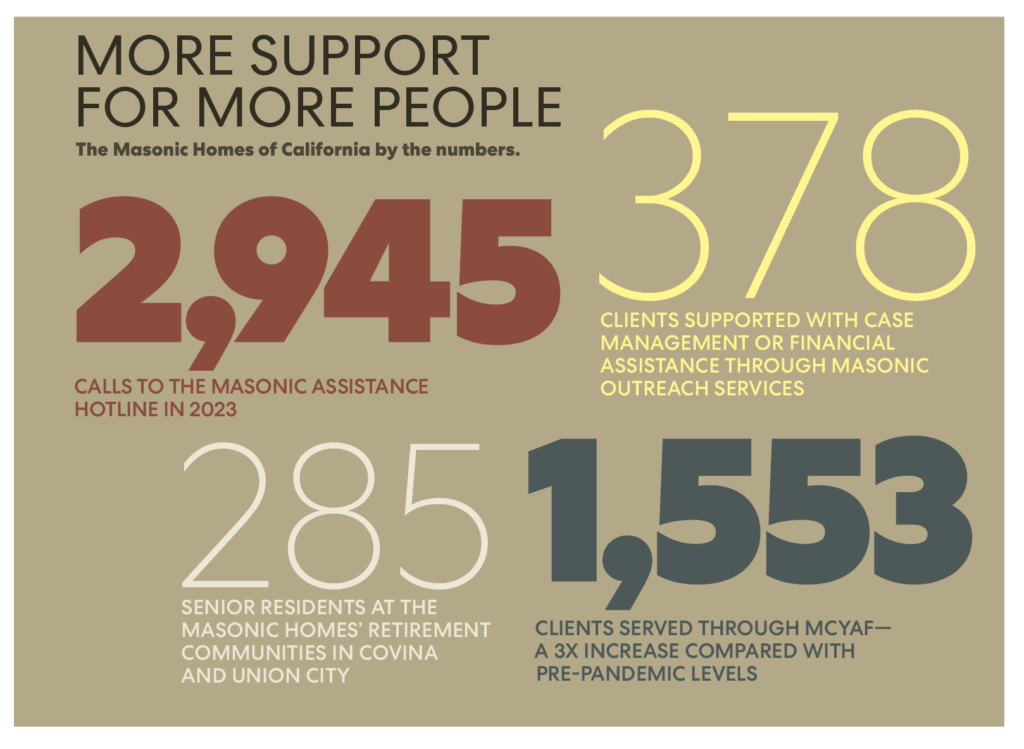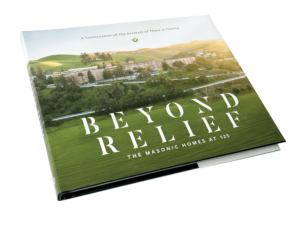
2023 FRATERNITY REPORT
At the Masonic Homes of California, It's a New Era of Relief
As the Masonic Homes of California celebrates 125 years, the organization is writing a new chapter in its history.
By Ian A. Stewart
Download the Masons of California 2023 Fraternity Report here, or view individual stories through the links below.
When Terry Quigley first stepped foot on the campus of the Masonic Homes of California in Union City last spring, she immediately recognized the significance of the institution. “I could feel the 125 years of history. It’s palpable,” she says. “It’s something you get a visceral reaction to when you walk in.” That sense of tradition and heritage practically permeated the circa-1898 edifice.
 But she also sensed something else: an almost limitless potential for change. Despite the Masonic Homes’ long and celebrated history as the “jewel in the crown of California Masonry” (as many grand masters have lovingly referred to it), the organization has evolved many times before, from a widows’ and orphans’ home into a statewide deliverer of care, services, and relief for people across the life span. Quigley recognized that the time had come for its next adaptation.
But she also sensed something else: an almost limitless potential for change. Despite the Masonic Homes’ long and celebrated history as the “jewel in the crown of California Masonry” (as many grand masters have lovingly referred to it), the organization has evolved many times before, from a widows’ and orphans’ home into a statewide deliverer of care, services, and relief for people across the life span. Quigley recognized that the time had come for its next adaptation.
In 2023, that change began in earnest, starting with the appointment of Quigley on July 1 as chief executive, replacing Gary Charland, who retired after a decade at the helm. With more than 25 years’ experience in senior care, which included serving as COO for Episcopal Community Services in San Diego, Quigley has brought a fresh set of eyes to the Masonic Homes, which, in addition to its two campuses in Union City and Covina also oversees Masonic Outreach Services and the Masonic Center for Youth and Families.
Quigley says she appreciated the Masonic Homes’ commitment to care for its members wherever and however works best. She also saluted its willingness to adapt to meet those needs. “There’s a commitment here to coming up with individual solutions, since no two members or their families have the same needs,” Quigley says. “The organization has been really committed to asking, ‘What’s the best solution for this person?’ rather than offering cookie-cutter opportunities for people to get support.”
Not long after her appointment, the finishing touches were being put on what has been a five-year, $115 million campus redevelopment that has modernized and reshaped both senior campuses: In November, leaders cut the ribbon on the new Citrus Heights Health Center in Covina, a 32-bed residence that will offer, for the first time ever at that location, skilled nursing and short-term rehabilitation services. With its completion, the Masonic Homes now boasts skilled nursing, memory care, and short-term rehabilitation at both campuses, fulfilling a pressing need in those communities and addressing some of the fastest-growing fields in senior living. Thanks to the renovations, overall capacity has increased by 58 percent while the share of apartments licensed for assisted living, skilled nursing, and memory care has increased compared with those set aside for independent living.
Opening Up
In December came another major development: For the first time ever, the board of trustees announced, the Masonic Homes of California would offer entry to Entered Apprentice and Fellow Craft Masons over 65, as well as their spouses, parents, and parents-in-law. The result is an enormous expansion of eligibility, bringing the Masonic Homes’ best-in-class suite of services to more members and their families than ever before.
To Sabrina Montes, the chief strategic officer of the Masonic Homes, that’s a game changer. “We have the ability, we see the need, and we now have the capacity to expand like this,” she says. “This allows us to be a more integral part of our members’ lives, no matter their age or their needs.”
The update to eligibility addresses several changing dynamics, Montes explains. As membership in the fraternity has dropped and the average age of members has come down, the demand for senior living among Masons has declined; at the same time, the need among members for safe, trustworthy, and affordable housing for their own parents and parents-in-law has grown. For eligible Masonic families (those who have been in good standing for the past five years), entry can be arranged on an “assignment-of-assets” contract, meaning it’s partially underwritten by Masonic relief dollars.
“This is going to help make the Masonic Homes the place our members turn first when looking for senior care for themselves or their families,” says Joseph Pritchard, the chief operating officer. “That’s something we’ve been working toward for some time.”

Finding Partners
Other changes at the Masonic Homes were less visible but similarly meaningful in 2023. Working alongside leaders from the Masonic Homes’ sister campus, Acacia Creek, the organization engaged senior-living consultants to examine and update the organization’s pricing and procedures to bring it more in line with industry standards. It also began working more closely with Acacia Creek on sales and marketing and to route incoming calls for service.
Additionally, the organization in 2023 partnered with the nursing and technical school Unitek College, which has locations in Hayward, Concord, and South San Francisco. Through this new partnership, the Masonic Homes will provide existing and prospective staff members with scholarships and training opportunities so they can obtain advanced professional certification. The first cohort of eight nursing assistants graduated this summer and have all accepted jobs with the Masonic Homes—not only developing their own careers but helping the organization meet the growing need for skilled caregivers.
Initiatives like those are potentially transformative as the Masonic Homes of California enters its next phase, redefining the organization’s mission and setting its sights on the next 125 years.
Community-Based Services Are Growing
While those changes were underway, elsewhere in the organization business continued as usual—or rather, it continued to increase. Masonic Outreach Services, which connects Masons and their families with local supports, relief funds, and case management in their own community, worked with 378 clients throughout the state and beyond while also resuming Lodge Outreach meetings for the first time since 2020.
Through that program, California Masons are trained to reach out to members locally and to refer them to services offered through the Masonic Homes and other providers.In 2023, the Lodge Outreach Program trained 189 California Masons representing each Masonic district of the state. In one single online event, Masonic Assistance staff also informed more than 400 Masons, widows, and family members about the range of community-based services offered through MOS.

The Masonic Center for Youth and Families also saw demand for its mental health, educational assessments, and therapy services soar. Prior to the pandemic, MCYAF typically managed around 500 clients per year. In 2023, that number tripled—the result of major growth in telehealth services, community-based partnerships with local schools, and service to seniors living at the Masonic Homes’ retirement communities. MCYAF was also certified as a mental health partner to Kaiser Permanente, potentially opening its services to more than nine million people in California.
125 Years and Counting
This year of change was perhaps never more sharply put into relief than during the Masonic Homes’ 125th anniversary celebration in June, for which the organization created a new coffee-table book, Beyond Relief, detailing its history and evolution. Staff and residents gathered that night to celebrate all that the Masonic Homes of California has become and to consider all that it still aims to achieve.
Services that didn’t exist or barely registered just a generation ago, like memory care, mental health and wellness, and telehealth, have all become integral to the organization, leaders noted. All of those services are now housed behind the same doors that first swung open in 1898.
The theme that emerged that evening was clear: For all the growth it has seen in 125 years, the overarching mission of the Masonic Homes has remained the same: to provide the best care possible to those in need. Considering where the organization is heading as it launches its next iteration, Quigley is adamant: “That much will never change.”
Beyond Relief: The Masonic Homes at 125

Purchase the new coffee-table book by the Masonic Homes of California celebrating 125 years of history.
Buy Today:
masonichome.org/book

